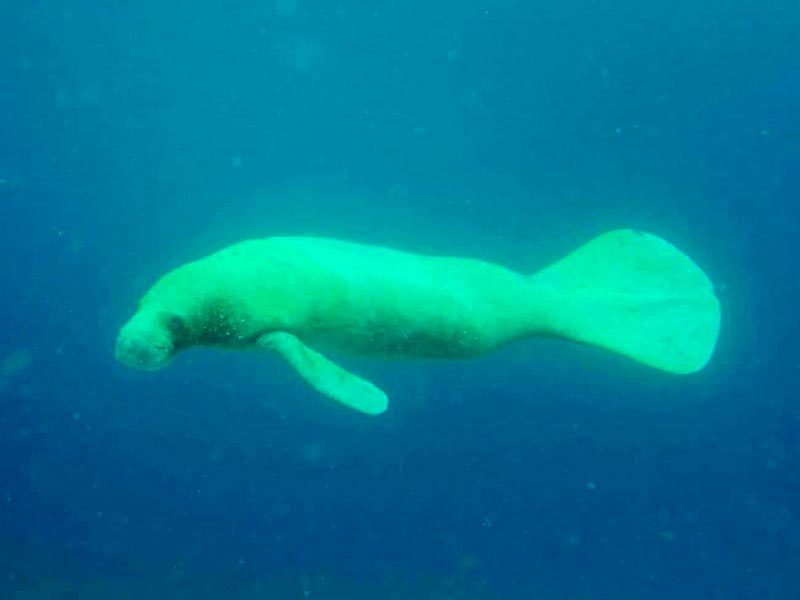West Indian Manatee spotted in Bonaire’s marine park, watch the video!
On the morning of Tuesday, July 10, 2018, marine park ranger Luigi Eybrecht spotted and was able to video a West Indian manatee (Trichechus manatus manatus) swimming in the waters of the Bonaire National Marine Park. This very well may be the first confirmed sighting of a manatee in Bonaire.
Manatees are harmless marine mammals, also called sea cows, or, the original “siren of the sea,” that feed on marine plants including seagrass, algae and even mangrove leaves. It is believed that they frequented these waters hundreds of years ago, but due to population declines, are seldom seen in the southern Caribbean in current times. The West Indian manatee subspecies is endangered with an estimated population of 2500 mature individuals, although very little is known about their population and distribution.
About Manatees.
Manatees comprise three of the four living species in the order Sirenia. The fourth is the Eastern Hemisphere’s dugong. The Sirenia are thought to have evolved from four-legged land mammals over 60 million years ago, with the closest living relatives being the Proboscidea (elephants) and Hyracoidea (hyraxes).
Manatees have a mass of 400 to 550 kilograms (880 to 1,210 lb), and mean length of 2.8 to 3.0 meters (9.2 to 9.8 ft), with a maximum of 4.6 meters (15 ft) and 1,775 kilograms (3,913 lb) seen (the females tend to be larger and heavier). When born, baby manatees have an average mass of 30 kilograms (66 lb). They have a large, flexible, prehensile upper lip. They use the lip to gather food and eat, as well as using it for social interactions and communications. Manatees have shorter snouts than their fellow sirenians, the dugongs. Their small, widely spaced eyes have eyelids that close in a circular manner. The adults have no incisor or canine teeth, just a set of cheek teeth, which are not clearly differentiated into molars and premolars. These teeth are repeatedly replaced throughout life, with new teeth growing at the rear as older teeth fall out from farther forward in the mouth, similar to elephants. At any given time, a manatee typically has no more than six teeth in each jaw of its mouth. Its tail is paddle-shaped, and is the clearest visible difference between manatees and dugongs; a dugong tail is fluked, similar in shape to a that of a whale.
(Source: STINAPA, Wikipedia)












